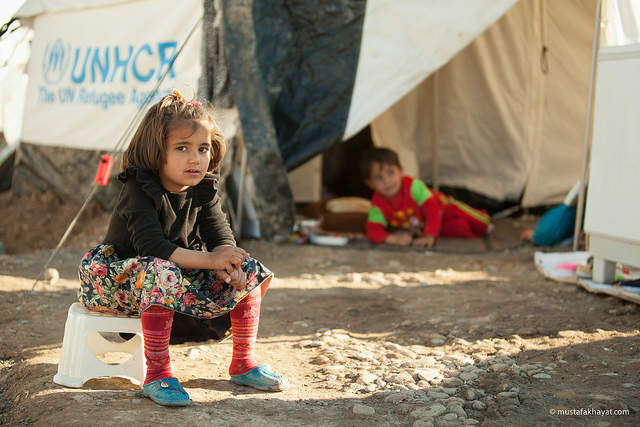
KAWERGOSK CAMP, Iraq –For the millions of Syrian refugees scattered across camps and illegal settlements, the chemical attack on a town in northern Syria and subsequent U.S. strike was a rare moment when the world turned its attention to Syria, before turning away again.
Some cheered the U.S. cruise missiles that hit an air base in central Syria –the first U.S. strike against Syrian troops –but others insist they are opposed to any U.S. intervention in their country. Few had any hopes that the apparent sudden shift in President Donald Trump’s policy would end up helping their situation.
“I saw him (Trump) on TV, he says he sympathizes with the kids but then he shuts them out. What kind of support is that?” asked Hamrin Mohammed, 30, a Syrian refugee from the northern Syrian town of Derik, who fled the fighting in Syria and has been living in a camp in northern Iraq for years.
DRAMATIC CHANGE
The military strike marked a swift reversal on Syria for Trump, who had repeatedly said the U.S. should stay out of the years-long civil war. But several refugees regarded Trump’s policy shift with a certain bitterness, noting that he said he was moved to act by photos of the “beautiful babies” killed in the gas attack after working for months to bar millions of refugee children and their families from entering the United States.
Trump has not spoken on whether his renewed involvement in Syria will also include a changed policy on Syrian refugees. But some refugee agencies in the United States are hoping that change is coming as well.
“I suspect his thinking will evolve on this,” said Linda Hartke, president and CEO of the Lutheran Immigration and Refugee Service.
TRUMP’S CHOICE
The Syrian refugees of Kawergosk in northern Iraq have been around for so long that their camp has turned into a small town. Shops of all kinds line its main street and most of the tents have been converted into small cement block houses.
Many of the camp’s residents welcomed the American cruise-missile attack on Syria but said that they wished America would go further and intervene to end the country’s six-year civil war.
“Trump has to do either this or that. Millions have been displaced, you cannot take this path and at the same time abandon them,” said Hussein Bashir Ibrahim, 33, who was displaced from the town of Qamishli in northeastern Syria. He said he was in the camp for so long that he felt “more dead than alive.”
“The strike is good but if he’s serious about wanting to help the kids he should take them in. Otherwise that shows that he has another agenda,” said 25-year-old Khalat Kamal Ismail, also from Qamishli.
Ismail said her sister had kidney problems that needed treatment abroad, but has been repeatedly rejected because apparently no one wanted to take in Syrian refugees anymore. “He could take a fraction (of the refugees) and still reduce their suffering,” she said.
THE CURRENT POLICY
Trump had taken something of a hands-off approach to Syria and Syrian refugees as both a private citizen and a presidential candidate, even urging President Barack Obama in 2013 to avoid getting involved in the civil war there. As a candidate he pledged to block Muslim foreigners from coming into the United States and suggested he would try to send home thousands of Syrian refugees who had been allowed into the U.S. under the Obama administration.
The first iteration of Trump’s now blocked travel ban indefinitely barred all Syrian nationals from coming to the United States. The indefinite ban on Syrians was eliminated from a second version of the travel ban, which has since been put on hold by a federal court in Hawaii.
Trump has also suggested at times that safe zones in and around Syria should be established to protect vulnerable populations.
“WE DON’T WANT TO GO TO AMERICA”
Around 1.2 million Syrian refugees live in Lebanon, most of them in squalid, illegal settlements that have sprouted across the country. They can hardly survive on the aid they receive, and dream not of America, but of walking across the border to Syria and returning to their homes.
Ibrahim, a refugee from the Syrian town of Qusair who now lives in the Ketermeya camp in Lebanon, said Trump’s action in Syriahas given him a glimmer of hope.
“We hope to God, after this strike, that he would set up no-fly zones in Syria and strike at other (government) air bases. Maybe then we can return home,” he said.
“We want him to help us return to our country, we don’t want to go to America.”
Wafaa, 50, a refugee from Homs living in a tent in Lebanon’s Bekaa valley, was much more skeptical and said she was against the U.S. strike.
“He’s banned us from entering America, now suddenly he likes us?”